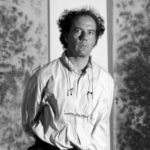Sicilia, José María

José María Sicilia (Madrid, 1954) is one of the most significant Spanish artists of the second half of the 20th century. He began his artistic career studying at the San Fernando School of Fine Arts in Madrid before moving to Paris in 1980. There he coincided with two other Spanish artists - Miquel Barceló and Miguel Ángel Campano, two leading figures in Spain\'s art world at the time.
His painting is of an expressionist style, while delving into a monochrome white palette. When he arrived in France the artist started working in large format. He organized his work in series where still lives and representations of domestic tools and utensils (hoovers, irons, scissors, buckets, etc.) were brought together with views of urban landscapes of Madrid and Paris.
During the mid-eighties he achieved recognition in Spain, France and New York due to his unique pictorial gesture, his use of violent and dramatic colors, and his dynamic lines. His solo exhibition at the Trans/Form gallery in Paris, the presentation of his work in Spain by gallerist Fernando Vijande and his solo exhibition at the Blum Helman gallery in New York marked the beginning of a significantly successful career, securing him a spot as one of the most influential contemporary Spanish artists of the second half of the 20th century. In 1989, he received the National Prize for Plastic Arts from the Spanish Ministry of Culture.
He has participated in numerous group and solo exhibitions in major cities around the world. His work is presented in museums such as the Reina Sofía Museum in Madrid or the MOMA and the Guggenheim Museum in New York. He currently lives between Paris and Sóller, where he has created a foundation dedicated to young artists. In 2015, he was awarded the Gold Medal for Merit in the Fine Arts.